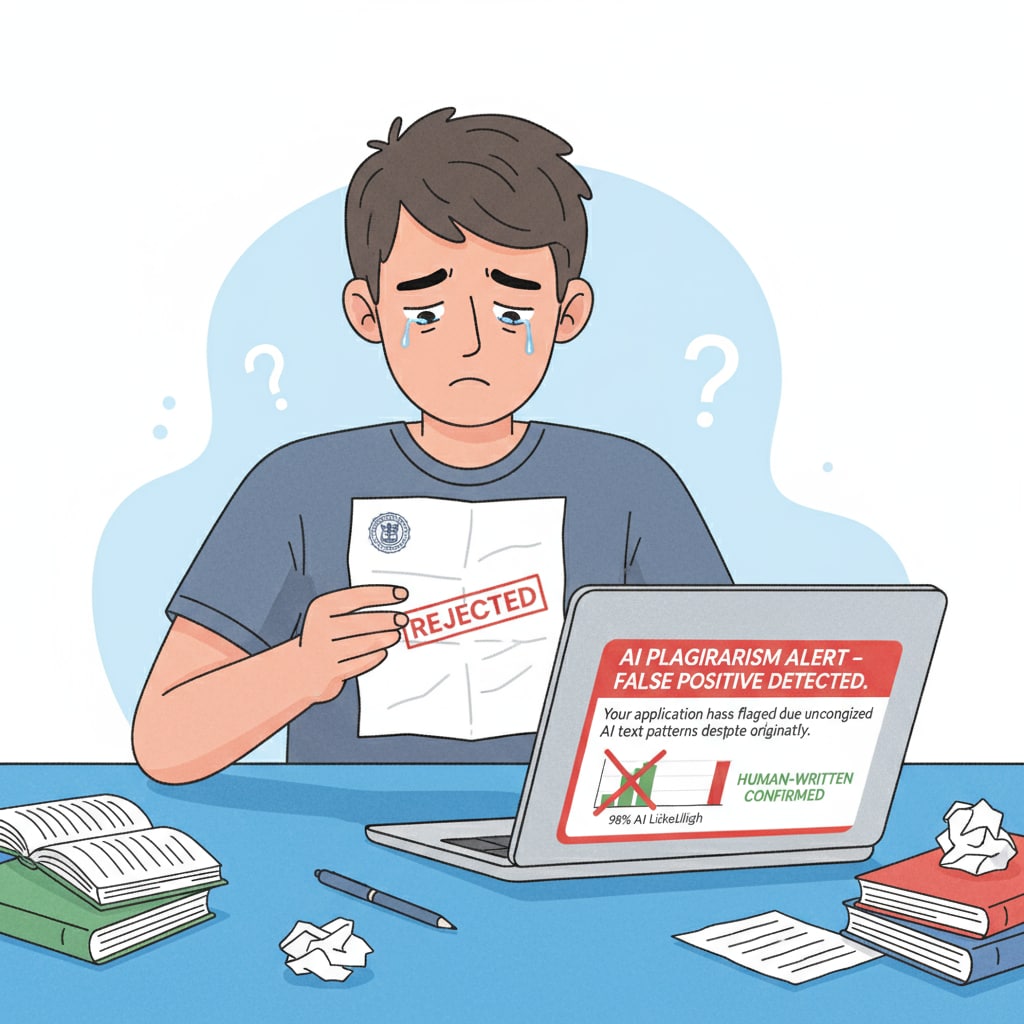In the realm of university applications, the intersection of personal statements, AI detection, and the admissions process has become a hot topic. With the increasing sophistication of artificial intelligence, educational institutions are deploying AI detection tools to ensure the authenticity of students’ personal statements. However, this has led to a concerning trend of false positives, where genuine personal statements are being misjudged as AI-generated.

The Rise of AI Detection in University Admissions
The use of AI in education has expanded rapidly. Universities are eager to maintain the integrity of their admissions process. AI detection tools are seen as a safeguard against plagiarism and unethical use of AI in crafting personal statements. These tools analyze various aspects such as language patterns, vocabulary usage, and writing style to determine if a piece of writing is AI-generated. For example, Plagiarism detection software on Wikipedia has evolved to incorporate AI capabilities for more accurate identification. However, in their enthusiasm to combat potential abuse, they may be causing unintended consequences.
The Impact on K12 Students
K12 students, who are in the prime of their college application journey, are bearing the brunt of these false positives. A student’s personal statement is a crucial component of their college application, serving as a platform to showcase their personality, experiences, and aspirations. When a sincere and original personal statement is wrongly labeled as AI-generated, it can derail a student’s college dreams. For instance, a student who has spent countless hours pouring their heart into their statement may find themselves facing rejection or having their application heavily scrutinized. This not only affects their academic prospects but also takes a toll on their mental well-being.

Moreover, the lack of standardization in AI detection tools exacerbates the problem. Different tools may use varying algorithms and criteria, leading to inconsistent results. One tool might flag a statement as AI-generated, while another deems it authentic. This inconsistency makes it difficult for students to know what to expect and how to prepare their statements.
Threats to Educational Fairness
The issue of false positives in AI detection poses a significant threat to educational fairness. Students from disadvantaged backgrounds may be disproportionately affected. These students may not have access to the same resources or support systems as their more privileged peers. If their personal statements are more likely to be misjudged due to factors such as writing style influenced by limited exposure to certain forms of language, it creates an unfair advantage for those from more affluent backgrounds. As stated in Educational equity on Britannica, fairness in education is about ensuring equal opportunities for all students, and false positives in AI detection undermine this principle.
The Need for a Collaborative Solution
To address this issue, a collaborative effort from schools, students, and technology developers is essential. Schools can play a role in educating students about the proper use of technology in their college applications and providing guidance on writing authentic personal statements. They can also advocate for more reliable and standardized AI detection tools. Students, on the other hand, should be proactive in understanding the requirements of the admissions process and seeking help when needed. Technology developers need to refine their algorithms to reduce false positives and increase the accuracy of AI detection.
Readability guidance: By using shorter paragraphs and lists, we can better summarize the key points. For example, under each H2, we can provide a list of relevant aspects. We also need to control the proportion of passive voice and long sentences. Transition words like ‘however’, ‘therefore’, ‘in addition’, ‘for example’, and ‘as a result’ should be evenly distributed throughout the text to enhance the flow.


